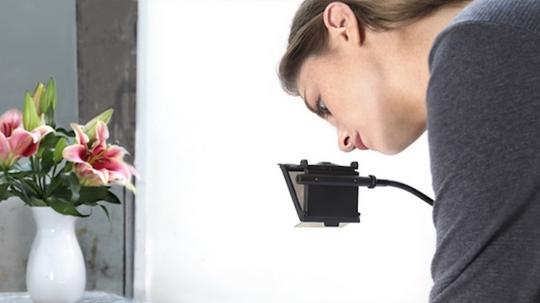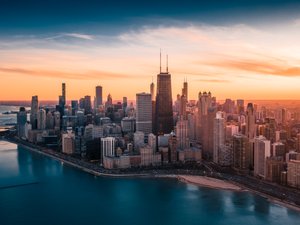
An Illinois professor has launched an innovative new art tool that's a modern reinterpretation of a device first invented in the early 1800s.
Pablo Garcia, an associate professor at the School of the Art Institute of Chicago (SAIC), turned his small art history project into a sought-after commercial product. In 2013, collaborating with Golan Levin, associate professor of Computation Arts at Carnegie Mellon University, Garcia raised $425,000 on Kickstarter from 11,000 backers for his original NeoLucida, a reinterpretation of the camera lucida, an optical device used by 19th-century artists as drawing aids.
Now, responding to popular demand, he wants to bring NeoLucida XL, a redesign of NeoLucida with bigger a viewing area and better lighting control, to people passionate about drawing. With just a few days to go, the second campaign has raised $301,724 on Kickstarter, almost 20 times the pledged funding goal.
What is NeoLucida?
NeoLucida is the 21st century version of camera lucida. Camera lucida was invented in 1807 and intended to help artists draw realistically. By looking down on paper through a prism, artists can trace a reflected image of the scene in front of them.
In the late 19th century, camera lucida started to disappear due to rise of photography but was still used in science laboratories, field research and professional commercial art. In the 20th century, camera lucida became a toy allowing young people to doodle for fun. Today, companies like Crayola have created projectors that allow children to trace what they see.
Despite various adaptations of camera lucida on the market, NeoLucida was the first one to use prism technology in almost about 100 years.
Why NeoLucida XL?
NeoLucida XL came under suggestions by the original NeoLucida supporters. They wanted a bigger prism to make the drawing process a little easier. However, through experimenting, Garcia realized that a bigger prism meant a shifting image. He then decided to abandon the prism and use mirror and glass to create the ghost reflections instead.
Inspiration Behind the Creation
Garcia has always been interested in the intersection between art, design and technology. When he encountered David Hockney’s book The Secret Knowledge, he loved the first-hand account of using optical devices such as lenses and prisms in art. The desire to recreate an “obsolete and forgotten” technology inspired Garcia to design the original NeoLucida.
Owning a collection of camera lucidas from different ages and a couple of books retelling their history, Garcia was able to reverse engineer the tool. Even though made the structure of NeoLucida seem extremely simple, calling it “prism on a stick,” going from idea to prototype to manufacture took many rounds of trial and error. To achieve the right proportion and optimal drawing experience required experimentation with different glasses, surface treatments and dimensions.
Incorporating NeoLucida in Art Education
Initially, Garcia thought that only art history nerds would be interested in NeoLucida, but many backers of his first Kickstarter campaign were just people interested in drawing. The tool helped beginners get into drawing, people who used to draw as a kid pick up their childhood interest, and practicing artists obtain a different perspective.
“Despite the technological world today, [the success of the campaign] shows there’s still this desire of putting pencil on paper,” said Garcia.
Art teachers also invited Garcia to teach NeoLucida workshops, allowing him to experience first-hand the joy that children found in drawing realistically and honing their artistic skills.
Garcia recognized that “almost all children have an instinct to grab a crayon and sketch stuff,” but when they start to want to draw more realistically and don’t have the training to do so, they get frustrated and give up. Therefore, he hoped that NeoLucida would be a tool that helps people continue their artistic pursuits.
“[NeoLucida] is more like training wheels on a bike ... getting people comfortable with the mechanisms that would be useful to draw more realistically,” Garcia explained.
Through the NeoLucida XL campaign, Garcia takes a step further in supporting art education. A pledge of $5 or more will go toward the cost of NeoLucida XLs being donated to public schools. With a pledge of $105 or more, one NeoLucida XL Kit goes to the backer and another one gets donated to a public school art program.
Next year, Garcia wishes to build up the educational community around NeoLucida, reaching out to teachers and connecting them with each other. Through working closely with art teachers and understanding their skills and needs, Garcia plans to develop a general teacher’s guide with details such as “the art history behind NeoLucida, how to approach new artists with it and how to set it up with young students”
Garcia doesn’t think that there will be a third version of NeoLucida. Yet, if something comes up, who knows what interesting projects he will be working on soon?
In the short run, the Kickstarter campaign for NeoLucida XL ends on June 2, 2017. Quality control and assembly packaging will take place in China in September. Shipping will start around October/November. Retail will be available in December.
Photo credit: Pablo Garcia








